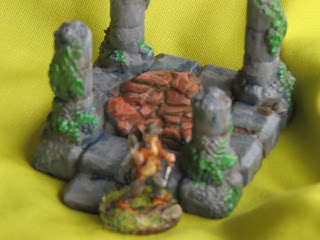Another quarter goes by and it's not surprising that the reading list was shorter, allowing for all the medical activity following my trip to hospital.
Max Hastings - Vietnam
I mentioned this one after picking up a copy last November. The subtitle calls it "an epic history of a tragic war" and that description is spot-on. In more than 700 pages Hastings covers the causes and objectives of the war, from French colony, through communist insurgency to drive out the French, supported by Russia and China, partition and American intervention. From beginning to end there seems no hope for the people of Vietnam, neither from the series of corrupt and unpopular governments in the south or the uncaring totalitarian state in the north. America spent a fortune in dollars and young lives but failed to prevent the communists taking over the whole country. Nearly a million refugees fled the country, mostly in boats, to reach some chance of a better future anywhere else in the world.
As well as filling in the big picture with significant events that I was too young to understand when they happened, the book has individual stories of people who were there: patrols, ambushes, attacks on fortified positions, life on a SAM battery; this really is a huge book.
Christopher Duffy - Austerlitz
I had already read David Chandler's account of Napoleon's greatest victory and was hoping for three-sentence summary of what he did that resulted in such an outcome. Both books gave me a blow-by-blow account of individual battalions and brigades slamming into each other in turn, all over the area of the battle.
After both accounts, all I can offer is this: Napoleon had an army that had camped and drilled together for two years, organised in fixed brigades and corps; the Russians and Austrians had no common language or experience of fighting together, and any organisation above the regiment consisted of ad hoc divisions and columns created on the day of battle. The allies should not have rushed to battle against the French. but instead they advanced off a commanding position on the Pratzenberg heights to fight on the level ground of the valley below, only to find that the French then occupied the heights they had abandoned. Individual units fought bravely in a piecemeal melee, but the outcome was inevitable.
Richard Osman - We Solve Murders
After 4 novels featuring the Thursday murder club, Richard Osman has moved on to a new set of characters for this story (although the old gang will be back). The Thursday Murder club started as a believable group of retired people looking into a murder in their back yard. As the series went on, the action became increasingly bonkers; having caught a local drug dealer, the gang may borrow a kilo of cocaine ro plant in someone's luggage, giving the police a reason to arrest the target. The retired intelligence agent calls on foreign agents to help out and good turns to a wide range of shady characters lead to favours in return.
This new story is bonkers from the start, with the main characters working for a close protection (bodyguard) agency. apart from the retired detective inspector who gets involved because he's family.
Like the other books, there are truly sad moments among the laughs. Also, the gang gets bigger as one good turn deserves another. An entertaining romp.








